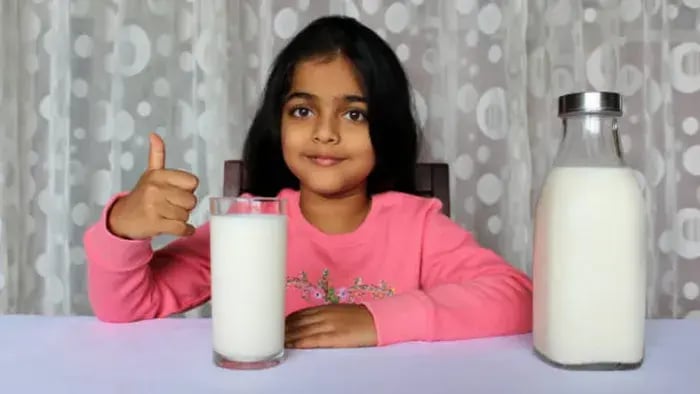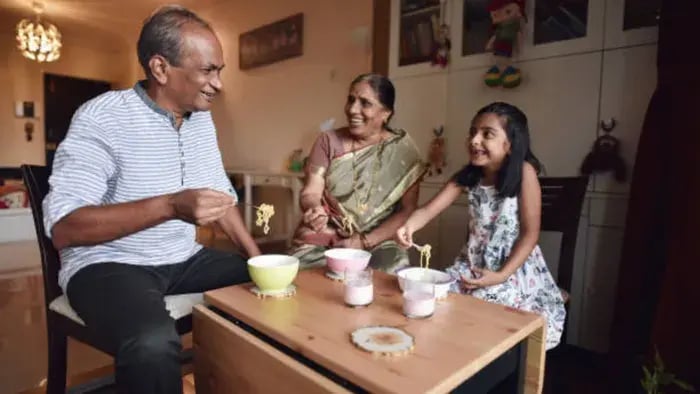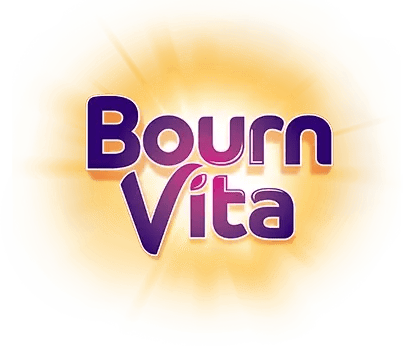Balanced Diet for Kids: A Parent’s Guide to Healthy Eating
- Start with Whole Grains
- Add a Good Source of Protein
- Include Fresh Vegetables
- Don’t Forget the Fruits
- Include Healthy Fats
- Use Dairy Wisely
- Alternatives for Lactose-Intolerant Kids
- Portion Well
- Make Meals Fun and Colourful
- Add a Hydration Element
Introduction
Building a healthy plate for kids is the easiest way to ensure they get all the nutrients for steady growth, strong immunity and active days. A balanced meal teaches kids early on that good food habits include a little bit of everything their body needs, no confusion or pressure.

A healthy plate for kids usually has a rainbow of fruits, vegetables, whole grains, proteins and a small amount of healthy fats. Each one plays a role, vegetables and fruits give vitamins and fibre, whole grains give lasting energy, proteins build muscles and healthy fats support brain growth. Simple foods like dal, rice, roti, sabzi, fruits, curd and nuts can be arranged to make a complete and nutritious plate.
Keeping meals fresh, colourful and varied also helps kids be interested in food and reduces fussy eating. Offering smaller portions of different foods rather than a big quantity of one item encourages natural balance.
Teaching kids what a good plate looks like helps them build habits for life. A little planning, bright colours and simple ingredients can make every meal a step towards stronger, happier and healthier days.
10 Ways to Create a Balanced Meal for Kids

Start with Whole Grains
Add whole grains like whole wheat roti, brown rice, dalia or oats to your child’s meal. According to Eat Right India, these grains give complex carbohydrates, fibre and B-vitamins that keep your child full and energetic for longer. A simple plate of roti or a small serving of veg dalia is a great base for any meal.
Add a Good Source of Protein
According to a study published in the National Academies Press, 1989, proteins are essential for growth and repair. Add options like boiled eggs, paneer, dal, rajma, chana or chicken. For quick meals, a bowl of moong dal khichdi with ghee or grilled chicken pieces with veggies ensures your child gets protein in every bite.
Include Fresh Vegetables
As per, Directorate of Horticulture & Food Processing, colourful vegetables provide important vitamins and minerals. Easy ideas are mixed vegetable sabzi, stuffed parathas or adding spinach to dal. Choose seasonal vegetables like carrots, beans, peas and pumpkin for freshness and variety.
Don’t Forget the Fruits
According to the National Institute of Nutrition, India, Fruits like bananas, papayas, apples, mangoes, and guavas bring natural sweetness along with fibre and vitamin C. Add a fruit serving at breakfast or offer it as a mid-meal snack. Fresh fruits help in digestion, immunity and hydration naturally.
Include Healthy Fats
As per a study published in, J Ayurveda Integr Med 2024, healthy fats from ghee, coconut, peanuts or almonds are essential for brain development. A teaspoon of ghee on dal-rice, peanut chutney with dosa or almond powder mixed into porridge is an easy way to add good fats without fuss.
Use Dairy Wisely
Dairy is an important part of kids' growth and development, according to a study published in, Nutrients 2020 it fulfils the essential nutrient requirements of calcium and vitamin D. Giving kids a glass of milk, a bowl of curd or paneer cubes daily, provides calcium, protein and vitamin D. Homemade curd with fruits or paneer stuffed parathas are fun ways to include dairy in meals that kids love.
Alternatives for Lactose-Intolerant Kids
If your child is lactose intolerant, include foods like ragi (finger millet), tofu, fortified soy milk or almond milk. Ragi porridge, tofu bhurji or smoothies with almond milk and fruits are yummy and, according to FASSI, packed with calcium, iron and protein.
Portion Well
According to, National Institute of Nutrition, India, half the plate should be vegetables and fruits, one-quarter grains and one-quarter protein. Instead of overloading the plate, offer small, colourful portions. This helps kids taste everything, feel full and not overeat.
Make Meals Fun and Colourful
According to, National Institute of Nutrition, India, use colourful plates, creative food shapes or mix vibrant foods like beetroot puris, carrot rice or fruit salads to make healthy meals more appealing. A playful and positive presentation helps kids eat without feeling forced.
Add a Hydration Element
Pair meals with a small glass of water, coconut water or homemade buttermilk. Avoid sugary juices or sodas. As per a study published in Nutrients 2019, hydration helps digestion, nutrient absorption and overall energy. Encourage water intake with balanced meals to build a healthy eating habit.
Conclusion

It’s not about making complicated food — it’s about using simple ingredients in the right way. A plate with grains, proteins, vegetables, fruits and healthy fats has everything a growing body needs to be strong, active and happy. Whether it’s a colourful vegetable sabzi, a soft ragi porridge or a bowl of curd rice, every meal can be a step towards building lifelong habits. With small changes, mindful portions and a bit of creativity you can turn everyday meals into building blocks for your child’s future wellness.
Her love for storytelling began with reading her grandfather’s speeches, where Tarishi saw the power of words in creating lasting memories. Combining her passions for food and writing, she has turned her life into a fulfilling path of sharing stories that celebrate flavours and how food brings communities together.
The views expressed are that of the expert alone.
The information provided in this content is for informational purposes only and should not be considered a substitute for professional medical advice, diagnosis, or treatment. Always seek the advice of your physician or another qualified healthcare provider before making any significant changes to your diet, exercise, or medication routines.
References
https://pmc.ncbi.nlm.nih.gov/articles/PMC6356561/
https://www.nin.res.in/downloads/My_plate_for_the_day.pdf
https://pmc.ncbi.nlm.nih.gov/articles/PMC7353177/
https://nin.res.in/downloads/DietaryGuidelinesforNINwebsite.pdf
https://www.ncbi.nlm.nih.gov/books/NBK234922/
https://eatrightindia.gov.in/eatrightschool/assets/resource/file/introduction-to-nutrition.pdf
















